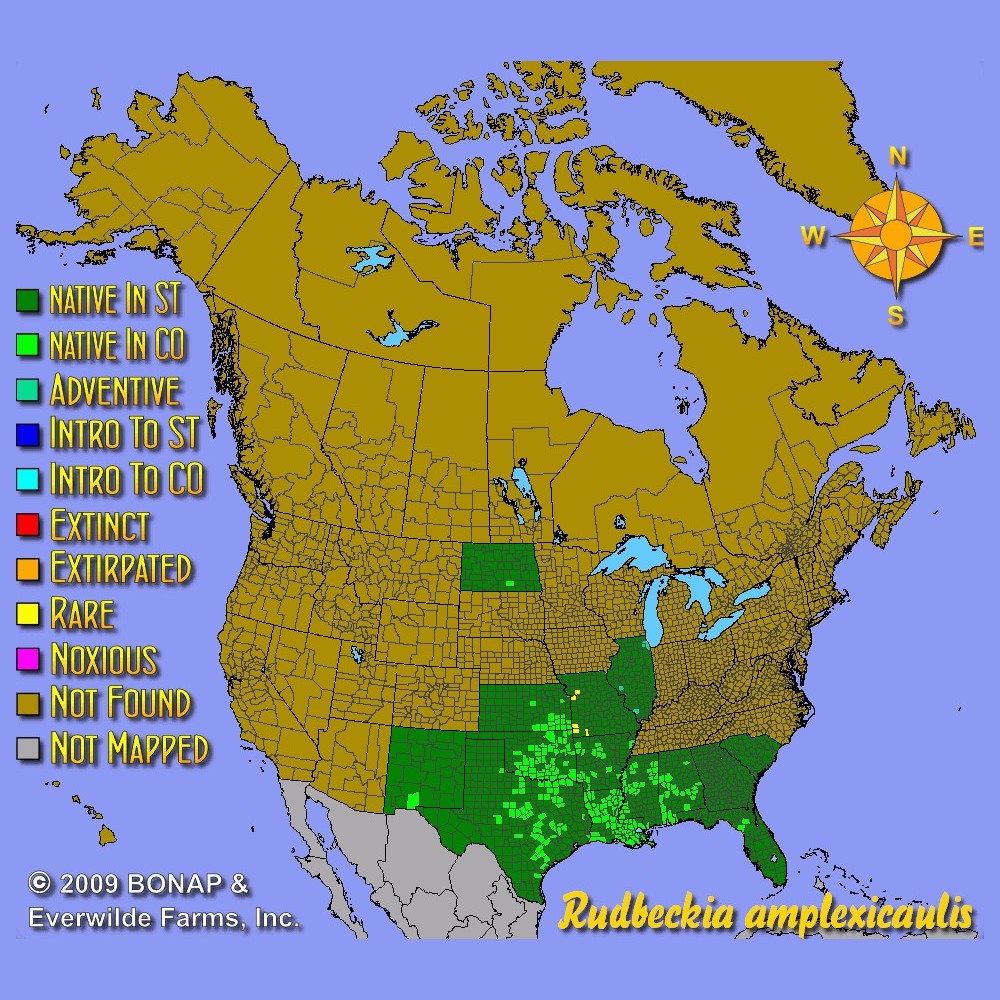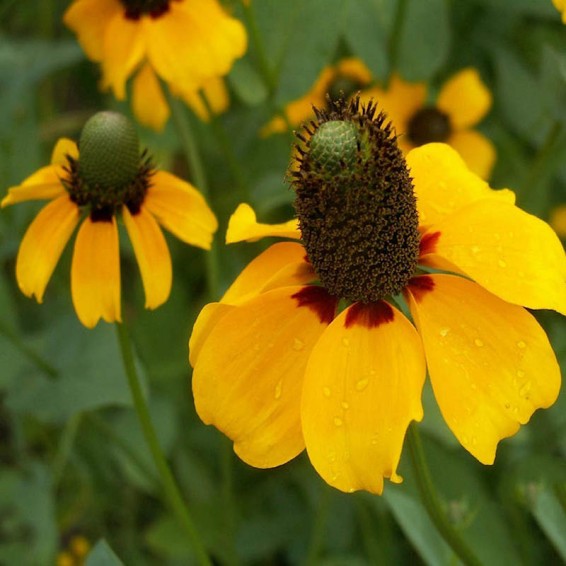Clasping Coneflower Seeds
- HOW TO GROW
- FAST FACTS
- REVIEWS
HOW TO GROW
Sowing: Direct sow in late fall, pressing into the surface of the soil since this plant needs light to germinate. Keep the soil lightly moist until germination, which usually takes 2-3 weeks. The Rudbeckia Amplexicaulis seeds can also be started indoors 6-8 weeks before planting in spring. Keep seedlings lightly moist, and transplant them as soon as they have developed several leaves.
Growing: Water seedlings regularly until they become established. This plant grows very quickly and needs little care, though it grows best in fairly moist soil. Mature plants also tolerate heat and drought, though they prefer moisture and will benefit from occasional watering in dry weather. Deadhead for the longest blooming period. The Rudbeckia Amplexicaulis plant attracts butterflies and may self-seed.
Harvesting: For cut flowers, choose stems with flowers that have just opened. Strip the foliage that will fall below the water level, and place in water immediately.
Seed Saving: After the flower petals fall from the head, the center cone will begin to develop seed. Remove the seed heads as soon as the stem beneath the cone begins to turn dry and brown. Spread the seed heads out to dry away from direct sunlight, then separate the small seeds from the stems by rubbing them lightly. Store the cleaned clasping coneflower seed in a dry, cool place.
FAST FACTS
Common Names: Clasping Leaf Coneflower
Latin Name: Rudbeckia amplexicaulis
Species Origin: US Native Wildflower
Type: Native Wildflowers
Life Cycle: Annual
USDA Zones: 2, 3, 4, 5, 6, 7, 8, 9, 10, 11, 12
US Regions: California, Mountain, Arid/Desert, Plains/Texas, Midwest, Northern, Northeast, Southeast
Seeds per Ounce: 50,000
Stratification: No Stratification
Germination Ease: No Stratification
Sunlight: Full Sun, Part Sun
Height: 24 Inches
Color: Red, Yellow
Bloom Season: Blooms Late Summer, Blooms Early Fall
Uses: Attracts Pollinators, Cut Flowers, Deer Resistant
Seeds
Fast service, product as described, would purchase from you again.
Good one
Good one for shorter plants and easy to start
Coneflower seed
Nice quality, I am very excited to get these planted.
High Quality packets
First time ordering. I was impressed with the speed at which the seeds arrived and also the packaging is very high quality, so if you need the store the seeds for some time after arrival this is your seed company.
DESCRIPTION
Though similar to the Black-Eyed Susan, this bright wildflower is identified by its clasping coneflower leaves and a bit of red showing at the base of the yellow petals. This easy-to-grow annual requires little care and will grow in a wide variety of garden locations.

HOW TO GROW
Sowing: Direct sow in late fall, pressing into the surface of the soil since this plant needs light to germinate. Keep the soil lightly moist until germination, which usually takes 2-3 weeks. The Rudbeckia Amplexicaulis seeds can also be started indoors 6-8 weeks before planting in spring. Keep seedlings lightly moist, and transplant them as soon as they have developed several leaves.
Growing: Water seedlings regularly until they become established. This plant grows very quickly and needs little care, though it grows best in fairly moist soil. Mature plants also tolerate heat and drought, though they prefer moisture and will benefit from occasional watering in dry weather. Deadhead for the longest blooming period. The Rudbeckia Amplexicaulis plant attracts butterflies and may self-seed.
Harvesting: For cut flowers, choose stems with flowers that have just opened. Strip the foliage that will fall below the water level, and place in water immediately.
Seed Saving: After the flower petals fall from the head, the center cone will begin to develop seed. Remove the seed heads as soon as the stem beneath the cone begins to turn dry and brown. Spread the seed heads out to dry away from direct sunlight, then separate the small seeds from the stems by rubbing them lightly. Store the cleaned clasping coneflower seed in a dry, cool place.
FAST FACTS
Common Names: Clasping Leaf Coneflower
Latin Name: Rudbeckia amplexicaulis
Species Origin: US Native Wildflower
Type: Native Wildflowers
Life Cycle: Annual
USDA Zones: 2, 3, 4, 5, 6, 7, 8, 9, 10, 11, 12
US Regions: California, Mountain, Arid/Desert, Plains/Texas, Midwest, Northern, Northeast, Southeast
Seeds per Ounce: 50,000
Stratification: No Stratification
Germination Ease: No Stratification
Sunlight: Full Sun, Part Sun
Height: 24 Inches
Color: Red, Yellow
Bloom Season: Blooms Late Summer, Blooms Early Fall
Uses: Attracts Pollinators, Cut Flowers, Deer Resistant
Reviews
Review
Seeds
Fast service, product as described, would purchase from you again.
Review
Good one
Good one for shorter plants and easy to start
Review
Coneflower seed
Nice quality, I am very excited to get these planted.
Review
High Quality packets
First time ordering. I was impressed with the speed at which the seeds arrived and also the packaging is very high quality, so if you need the store the seeds for some time after arrival this is your seed company.






